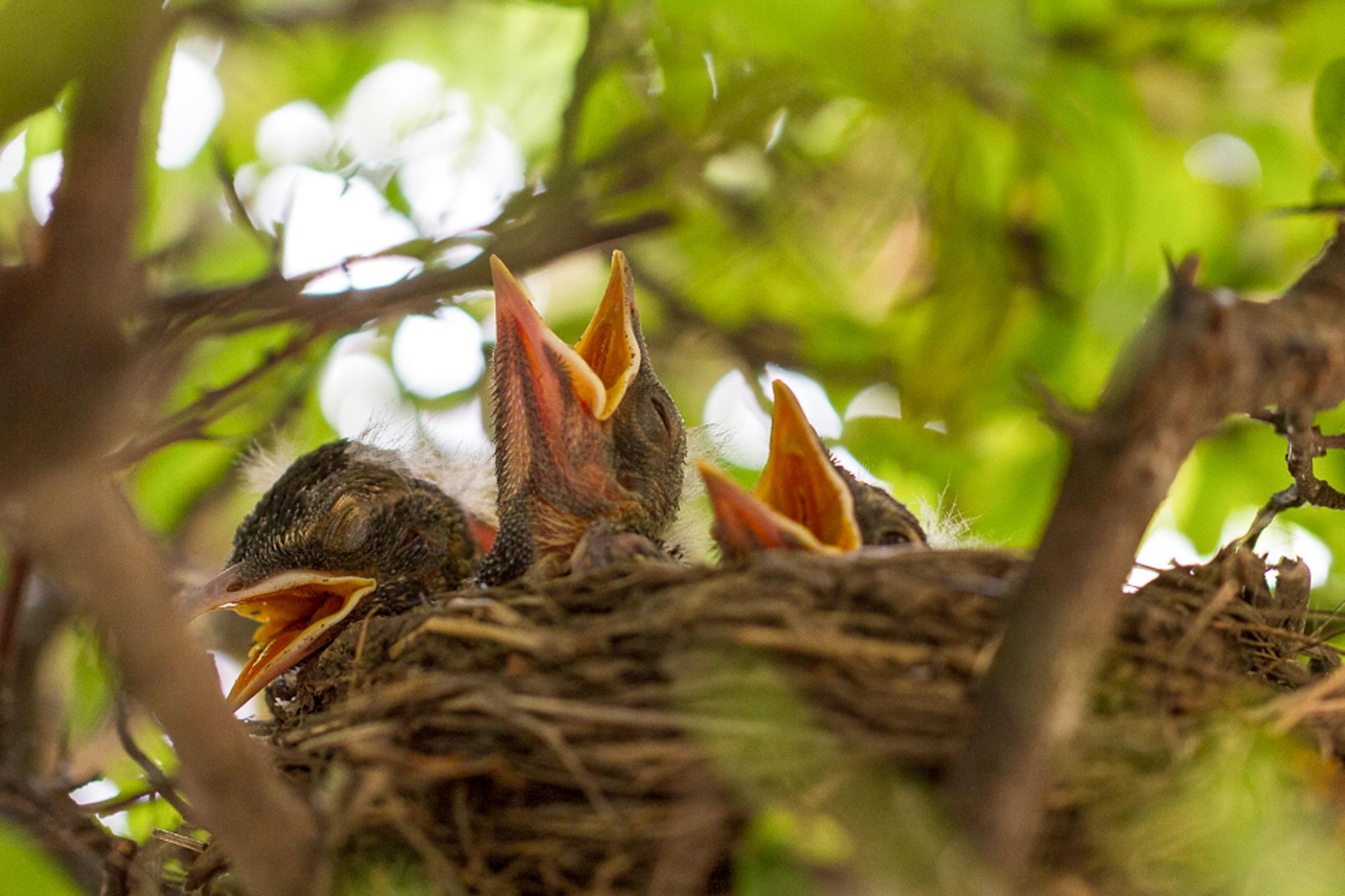Few things are more heartbreaking than encountering an injured, sick, or orphaned bird or other wild animal. It is in our human nature to want to help, but how do we make sure we do more good than harm? Follow these important guidelines.
Injured Birds
Adult songbirds can become injured and sick for a multitude of reasons. The most common reasons include getting attacked by house cats, being hit by cars, window strikes, bacterial and viral illnesses contracted at bird feeders, and many more.
Characteristics of adult songbird in need:
- On the ground not moving
- Does not fly away when approached
- Easily picked up
- Extremely fluffed up feathers
- Eyes closed, squinted, crusty, weepy, swollen, bleeding
- Evidence of blood or wounds
- Obvious injured limb (dangling leg, drooping/hanging wing, wings not symmetrical)
- Tries to fly but can’t
If you find an injured bird, carefully put it in a cardboard box with a lid or a towel over the top, and place in a cool, safe place. Birds go into shock very easily when injured, and often die from the shock. If a bird has hit a window and is still alive, it may just need a little time to regain its senses, then may be able to fly away.
Do not try to force feed or give water to the bird. Take the bird outside and open the box every fifteen minutues to see if it is able to fly away. If it is still staying put after a few hours, you can try to find a local wildlife rehabilitator.
RESOURCES -
- Connecticut State List of Licensed Wildlife Rehabilitators (CT DEEP)
- Wildlife Rehabilitation Clinic at Sharon Audubon Center
Orphaned Chicks
Young songbirds are often “bird-napped” by well-intending people who have mistaken a normal situation for something being wrong. No one can raise a baby bird as well as the bird’s parents, so we do NOT want chicks to be taken away from their parents unless they are sick, injured, or truly orphaned.
If you have found an orphaned bird, the first step is to determine if it is really orphaned.
HATCHLINGS & NESTLINGS
Hatchlings and nestlings are very young birds that need to remain in the nest to survive.
Hatchlings are either featherless, have thin down, or have early stages of feather growth. Their eyes are closed for at least the first week or so after they hatch (varies with species). They are not able to make their own body heat and need to be kept warm by the mother bird.
Nestlings have the start of feathers over their bodies, often being fully feathered by 2 weeks of age (varies with species). They have the beginnings of flight feathers on their wings. They are more mobile in the nest but are not yet able to stand, hop, or walk. Sometimes older nestlings may fall out of the nest when they are wiggling around inside or beginning to perch.
If a hatchling or nestling is found on the ground, a licensed Wildlife Rehabilitator should be contacted. While you wait for further instruction, you can create a makeshift nest for the baby bird in a small Tupperware container or a similar round dish, completely lined with layers of toilet paper that prevent the baby from touching the container itself.
FLEDGLINGS
When many young birds first fledge and leave the nest, they may still have a little down with short tail and wing feathers. Fledglings, however, are often NOT in need of human's help when found on the ground.
Did you know that many songbird species learn how to fly from the ground? They have left the nest and are able to sit upright, perch, and can hop or even flutter in short bursts. The baby appears to be alone on the ground, but the parent birds remain nearby in the trees and come down regularly to feed the baby, anywhere from several times an hour to every 1 or 2 hours. The baby will often hide itself in the grass or by low bushes for protection. This situation is completely normal for many songbirds and there is likely no need to interfere.
Characteristics of healthy fledglings:
- Bright, clear eyes
- Able to stand, jump, hop, flutter
- Parent seen/alarm call heard in nearby tree
More Information
How you can help, right now
Get Involved
There are so many great ways you can get involved with Audubon Connecticut and make a difference for both the wildlife and the people who call Connecticut home.
Visit Our Centers
Connect with our nature centers in Greenwich, Sharon, and Southbury. Each unique center offers trails, educational resources, conservation opportunities, and more.
Support Us
Through land stewardship, science, education, and advocacy, Audubon Connecticut works across the state to preserve habitat and protect bird species that are of state, national, and global concern.





